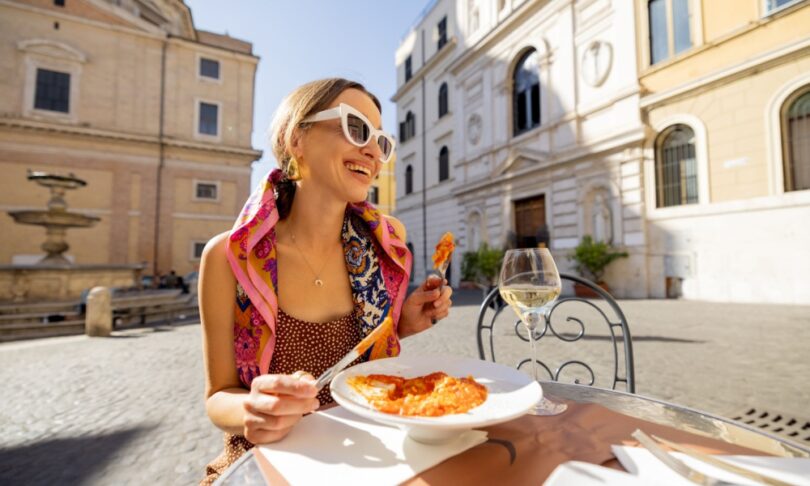Dining in any foreign place is almost always an orchestrated lesson on cultural practices. The casual diner in Europe will find the rules of the game are not always what they appear to be halfway around the world. Eating out in Europe should be an enjoyable experience and not one that brings on international incidents. In order to avoid a dining goof, here are some tips for dining out abroad in Europe that can also apply to meals across the continent.

Research Tipping Customs
Travelers often research where they want to go and what they want to see while in Europe. But many times, visitors neglect to read up on the tipping situation while eating out in their selected country. Tipping practices vary from country to country. If you don’t know the rules, you could leave a wad of cash on the table when your service was already included in the bill, or perhaps worse, leave no tip at all when a tip is expected. Most guidebooks will touch on tipping practices throughout Europe. But, before you hop cheap red eye flights to Paris or Rome, make sure you’re well-versed on your destination’s tipping situation.
Use a Fork and Knife
While eating certain foods with your hands across the globe is normal, in Europe, you’ll seldom find this to be acceptable. Even if you’re eating pizza in Italy or currywurst in Berlin, you can expect diners to be braving the whole pie or sausage with a fork and knife and not their hands. This is a good tip to keep in mind; you don’t want to be seen as that rude tourist!

Refrain From Making Customized Requests
If you request a dish to be cooked a certain way or without something specifically, you might suddenly have a rude waiter on your hands, especially if you’re in a fancier restaurant. Many establishments around Europe see suggestions on how to prepare their dishes as somewhat rude and over-stepping. If you’re unsure about a dish or how it’s prepared, ask your waiter for help in finding the right meal for you rather than angering the kitchen with requests.
Don’t Expect the Bill
In the U.S., the bill is practically on the table before you have your first bite. However, in Europe, this is almost never the case. Long meals are considered commonplace. Once you have secured a table for the evening, the restaurant treats you as though you have your table for the whole night. There’s no rush to turn the table over in most cases. If you’re in a hurry, don’t merely wait around for the bill. It might never come. You may have to ask for the bill if you need to be somewhere in the next few hours.
When it comes to dining out abroad, it’s also important to note that if you ask the waiter or waitress to split the bill seven different ways and across many different credit cards, you might meet some opposition. Generally, splitting the bill in Europe is seen as a hassle to restaurant workers, especially when you hand over your foreign credit cards. It’s always a good idea to have cash when you go out to eat, especially with a group.

You may also like: Six Tips for Choosing Restaurants While Traveling Internationally
Know If You’re Ordering From the “Tourist Menu”
Most seasoned travelers have experienced a situation where prices for locals and tourists aren’t the same. This is a common practice in Europe too. There’s often a more reasonably priced menu for locals and one with significant markups for tourists. It’s always best to go to a restaurant where prices are posted or to ask to see the menu to confirm pricing before sitting down so that you’ll know what to expect.
Highly-trafficked tourist areas in France and Italy will often have “tourist menus” that they offer visitors to place their orders. These menus generally feature three-course meals, including a few different drink and entree choices, as well as bread. Many tourists scoff at the prospect of ordering from this menu; however, it can serve as a painless way to try the highlights of a region’s cuisine without it becoming necessary to ask a lot of research on dishes. Plus, you’ll be sure to save some dough.
Dine Out for Lunch Instead of Dinner
It’s easy to fall ill with sticker shock when looking at dinner menu prices in Europe. A good antidote for this is to grab a hearty lunch instead. Lunch menus tend to offer the same variety that a dinner menu does and provide a much-needed break from the sun during a day of sightseeing. Also, since most European restaurants require reservations, it’s easier to secure a spot for a meal during the daytime when there’s a stronger likelihood that more people will be at work. And, when hunger strikes later in the day, a tapas bar may be the ideal location for a small meal.

Slow Down When Having Your Meal
There’s an expectation that people will eat their food at a fairly quick pace. After all, there are places to go and people to see! However, that’s not the case in European countries like Italy, France, or Spain. Instead, meals with business associates, friends, and family can last three or more hours. Meals are often multiple courses and involve multiple rounds of nightcaps or coffee to keep the conversation going.
Understand the Deal With Drinks
Visitors to Europe are often surprised by how expensive menu items can be, particularly when purchasing drinks. For example, Ireland, the United Kingdom, and some Scandanavian countries have regularly ranked as having the most expensive alcohol. Why is that? It has to do with excise taxes placed on these types of drinks in some countries. And, substituting soft drinks is not likely to seem any better. Many European countries, like Poland, have imposed sugar taxes to discourage residents from consuming these drinks, causing an uptick in prices.

You’ll Have To Ask for Water
Restaurant customers expect their servers to automatically bring them water in the U.S. The same can’t be expected in Portugal, Germany, France, or Spain. It’s helpful to learn the local lingo for requesting water or come armed with body language and sound effects to demonstrate that you’ll need some H2O. Just keep in mind that requesting tap water in certain European countries can sometimes be seen as disrespectful.
Got any more tips for dining out abroad in Europe? Tell us all about it in the comments below!








